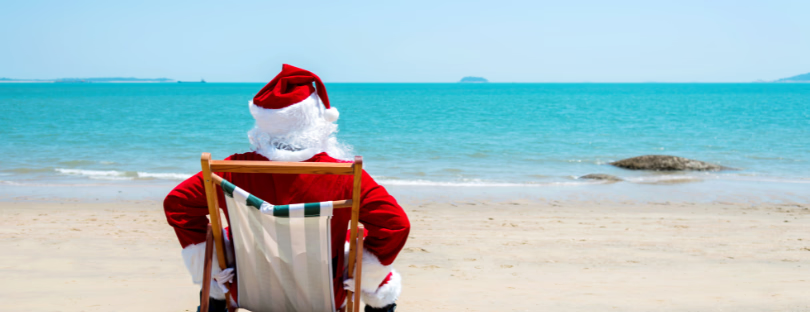
Solo Travel Market to Hit $1 Trillion by 2030: How Solo Travellers Are Redefining Travel Retail
New research from m1nd-set has revealed a powerful shift in the global travel retail landscape — the solo traveller is no longer a niche, but a major market force. Within the next five years, the number of solo travelers is expected to double, reshaping how airports, cruise lines, and ferry operators approach retail, engagement, and service.
Already valued at $482.5 billion, the solo travel market is on track to exceed $1 trillion by 2030, marking not just a trend, but a structural change in how people experience and consume travel.
Solo shoppers are redefining travel retail
The research paints a clear picture: solo travellers are more intentional, discerning, and profitable than the average customer. While fewer solo travellers visit duty free stores (just under 40%), those who do are far more likely to buy — boasting a conversion rate of 71%, compared to the global average of 66%.
They also spend more, averaging $133 per purchase versus $129 for all travellers, with Jewellery & Watches, Fashion, and Electronics topping their spending categories. These aren’t impulse buyers drifting through aisles — they’re focused, often pre-researched consumers looking for quality, authenticity, and exclusivity.
At airports, solo travellers tend to be Gen X business flyers, with 42% travelling for work (vs 27% globally) and nearly a third flying in premium class. Interestingly, although solo travel overall is female-dominated, 57% of airport solo buyers are men — a reminder that travel purpose often dictates behaviour more than demographics.
This group is also highly value-driven:
- 57% buy for themselves, not others.
- 58% actively compare prices.
- And they put strong emphasis on service quality and store atmosphere.
This combination of confidence, independence, and discernment makes solo travellers a retailer’s dream — but only if brands know how to engage them properly.
Maritime retail: two solo traveller profiles emerge
The report highlights a fascinating divergence between solo shoppers on ferries and cruise ships, proving there’s no one-size-fits-all strategy for maritime retail.
On ferries, solo travellers are mostly Gen Xers (44%), known for their practicality and planning habits. A striking 78% plan their purchases in advance, reflecting strong intentionality and brand awareness. Their conversion rate hits 83% (vs 78% globally), although their average spend is slightly below the global ferry retail average at $165 versus $172.
By contrast, on cruise ships, the solo segment has doubled since 2023, driven largely by Millennials (52%). Unlike their ferry counterparts, cruise solo travellers are more impulsive, with 29% buying on a whim compared to 20% across all cruise passengers.
Their numbers are also impressive:
- Conversion rate: 78% vs 65% global average.
- Average spend: $203 vs $196 globally.
Cruise lines are seeing these travellers as an emerging high-value audience — adventurous, digitally savvy, and motivated by experience rather than price alone.
Human connection drives higher sales
One of the most revealing aspects of m1nd-set’s research is the enduring importance of human interaction — even among solo travellers, who by definition value independence.
According to Dr. Peter Mohn, CEO of m1nd-set,
“Solo travel represents a structural shift that redefines how people consume travel and related goods and services.”
The data backs that up:
- On ferries, 61% of solo passengers engage with sales staff — and an astonishing 86% say that interaction positively influenced their purchase.
- On cruise ships, 54% interact with staff, with 84% of those interactions leading to a purchase.
- In airports, 52% of solo buyers interact with staff versus 49% globally, with 77% of those interactions resulting in a sale.
Mohn’s takeaway is clear:
“The crucial link to conversion is beyond any doubt the friendly and well-informed staff. Personal and premium service is indispensable in converting this high-value segment.”
In short, solo travellers might fly, sail, or roam alone — but what converts them is human connection, expert service, and authentic engagement.
A cultural movement, not a trend
The solo travel boom is more than a statistical spike — it’s a cultural evolution that’s reshaping global travel behaviour. The post-pandemic era has normalized independence, flexibility, and self-fulfillment, with travelers prioritizing experiences over status and authenticity over conformity.
Platforms like Airbnb, Expedia, and Skyscanner have already adapted, introducing tools and filters for solo travel packages and flexible itineraries. Meanwhile, hotel groups like Accor and Marriott have begun tailoring offers to individual travellers, focusing on community-driven experiences such as local meet-ups, coworking spaces, and wellness retreats.
In the retail sector, duty-free operators and cruise brands are now rethinking their strategies to serve this segment more deliberately. Dufry, for instance, has been investing in digital pre-order tools and personalisation engines, while Heinemann has expanded its premium and gifting categories — both moves that align closely with solo travellers’ desire for tailored, meaningful purchases.
The takeaway: solo travellers are the new retail trendsetters
As the solo travel market races toward the $1 trillion mark, travel retailers face both a challenge and an opportunity. This audience expects more — better service, curated experiences, and genuine interactions. But when brands get it right, the rewards are tangible: higher conversion, stronger loyalty, and more premium spending.
In an era of automation, the success formula might sound surprisingly traditional — human connection, trust, and service quality. Yet it’s exactly what solo travellers crave most.
The message for airports, cruise operators, and retailers is clear: treat the solo traveller not as a niche, but as the next cornerstone of travel retail. Those who recognize and invest in this shift now — much like the early adopters of digital travel tech — will be the ones leading the next decade of global travel growth.










